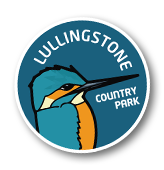WIldlife and plant habitats at Lullingstone Country Park

Lullingstone Country Park is split between woodland and grassland, which are ideal habitats for a wide variety of plant and animal life.
Ancient trees
The park is renowned for its veteran trees, beech and hornbeam are common, as well as the English oak. Some of these are tall, mature trees which are believed to be 500 years old or more. One oak is at least 1,000 years old – making it one of the oldest trees in the country.
Plants and wildflowers
The woodland areas at Lullingstone are the perfect environment for a diverse collection of fungi and wildflowers, such as bluebells which can be seen carpeting the ground in spring. Out on the grassland, you can spot different plants, such as the lizard orchid, greater butterfly orchid and the corky-fruited water-dropwort.
Wildlife
The mix between woodland and grassland at Lullingstone Country Park makes the area the perfect place for many different animals. Dormice can be found in the long grass and the veteran trees make ideal roosting spots for Daubenton’s bats. If you walk through the woods, you might be able to hear the lesser spotted woodpecker or catch a glimpse of the sparrow hawk hunting for its dinner.
The woodland is also home to the rare roman snail.
In the warmer months, Lullingstone attracts over 270 species of moths and butterflies.
Read our management plan (PDF, 10.4 MB) to find out more about how we maintain and look after the wildlife at Lullingstone Country Park.